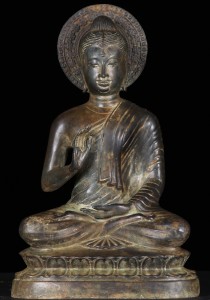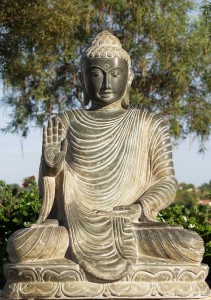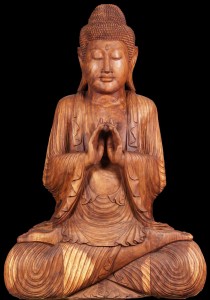January 26th, 2023

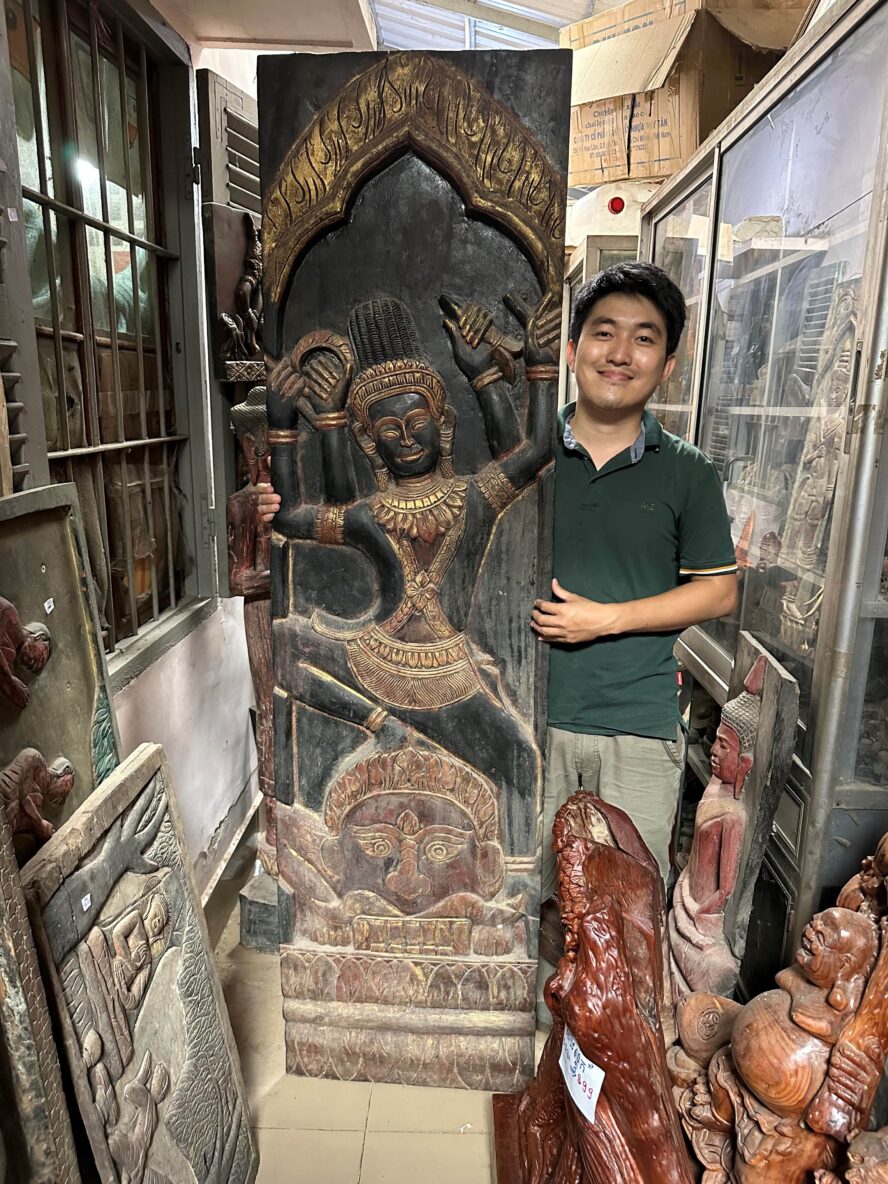
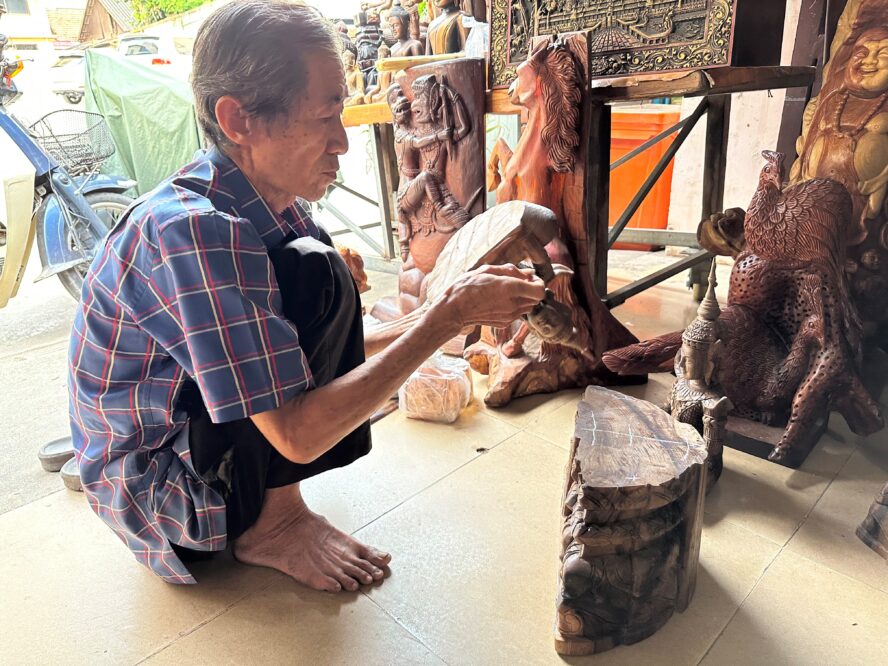
I first met Chandreas 18 years ago. He was a 12-year-old boy helping his mother in their wood statue business, struggling with English. Upon arriving in Cambodia and having him greet me after a 5-year hiatus I was amazed at the man he has become. His mother has passed away and now it is just Chandreas, his sister, and his father, Prou Kea running the business.
Chandreas sells wood statues and panels of Hindu and Buddhist motifs carved from recycled wood. The wood is from old houses, beds, and even pagodas. The wood panels are made from wood planks that are used for beds and the larger statues are carved into the thick old pillars of houses. The wood is an old, slow-growing, dense wood that is illegal to cut down anymore in Cambodia. You can feel the weight of the statue when you pick them up. They feel dense.
I love nothing more than looking through his shop, searching in the corners for the old pieces that have a good layer of dust on them, and listening to Chandreas tell tales about what the story is behind the statue or where the wood is from.


We took a trip out to where the statues are made on the outskirts of Phnom Penh. It is a big, open area just littered with sawdust and half-carved statues. The 68-year-old Prou Kea greeted me. We spent the next two hours together climbing through his shop digging in corners to find some hidden gems even he forgot about. He showed me the raw pillars that the statues are carved from and the wood planks used for the panels from old beds. A great find was 4 antique ox cart wheels that are from French colonial times and an antique rice mortar used for pounding the husk off of rice.


After we finished looking through the workshop, Chandreas’s uncle and some of his father’s friends were enjoying the afternoon next to a smokey fire, so I decided to join them.

We spent the afternoon eating salty, dried fish, and dried buffalo with ginger and stir-fried duck while drinking a fair amount of beer. On each sip of beer, everyone put their glasses together saying “Some Chul muy!” which is a respectful way of saying, cheers. The whole time I am grinning ear to ear thinking how fortunate I am to be here at that moment.
While writing this, I am watching Prou’s video where he is talking about the old wood and he is just a wonderful man. They have a wonderful family. I am honored to be associated with people like this.


